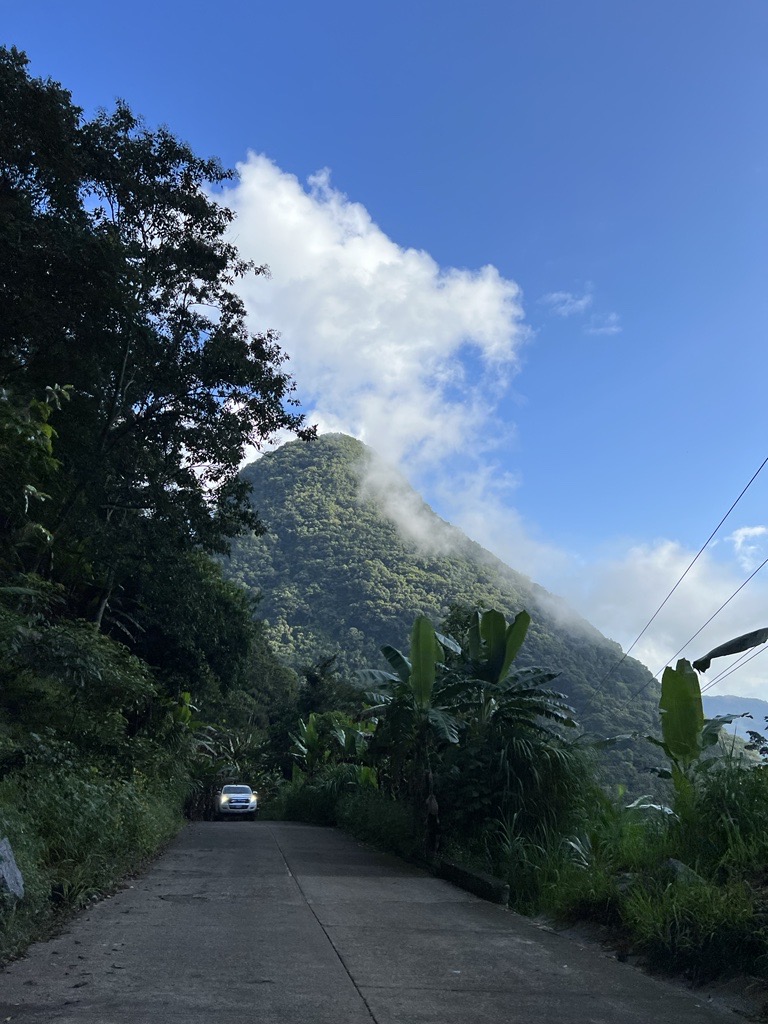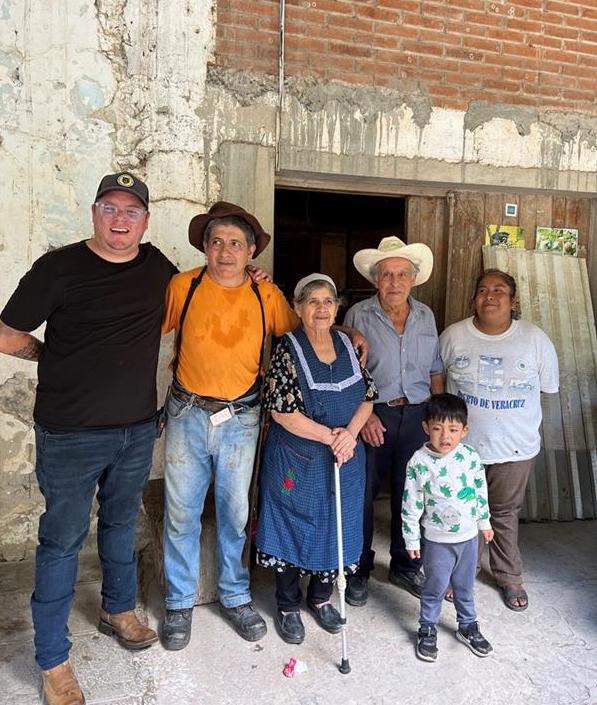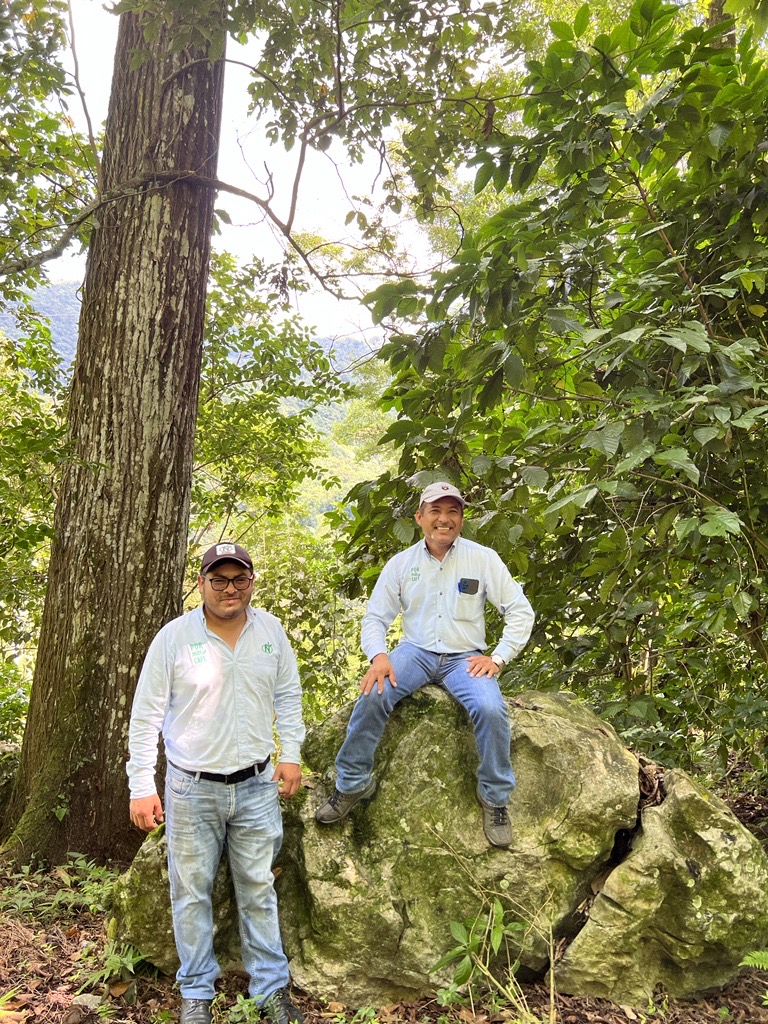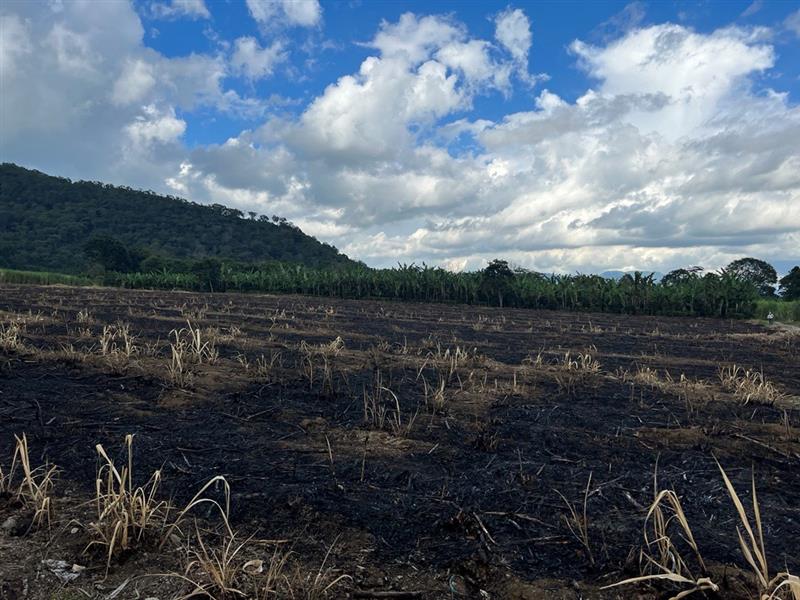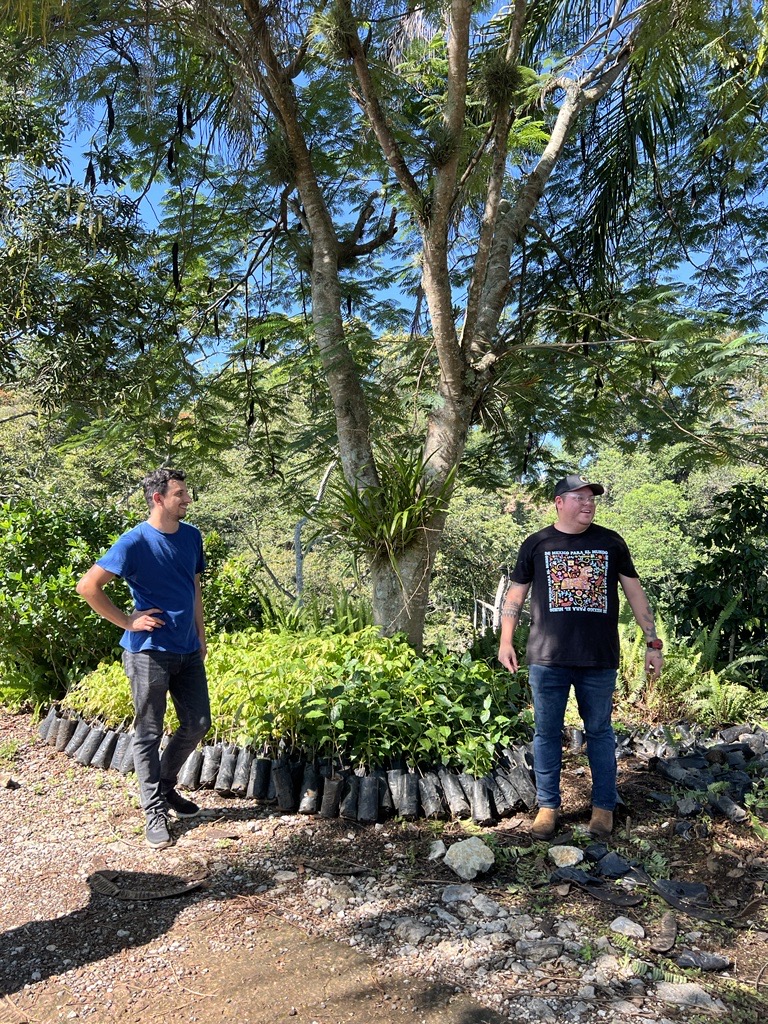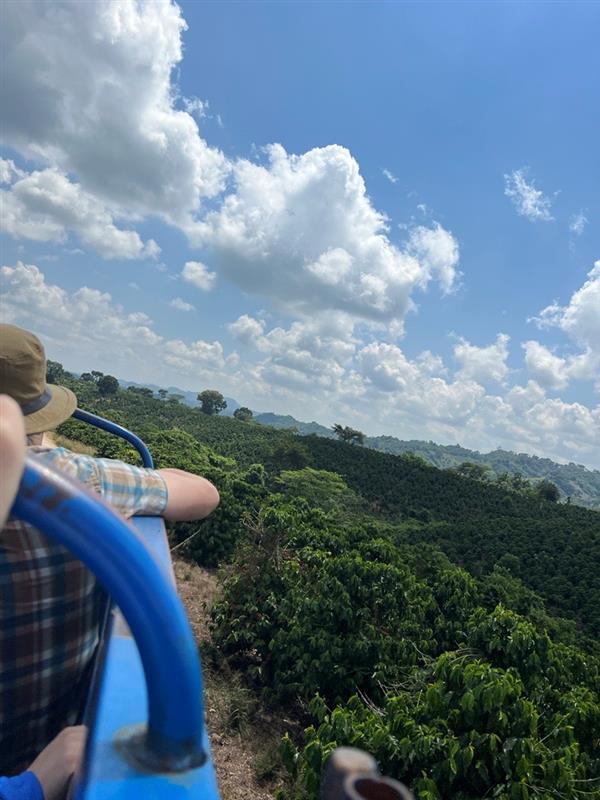Each year, the winners of the six U.S. Coffee Competitions are gifted a trip to a coffee origin as part of their prize package. This year, NKG Bloom sponsored that experience, steering the trip off its usual track in a number of ways. Historically, the trip is sponsored by a green coffee importer that encourages the champions to source award-winning coffees for the next season of competition. On this trip, however, the agenda was to share the grassroots work of NKG Bloom with these exemplary coffee professionals.
NKG Bloom is a global initiative, by Neumann Kaffee Gruppe, to ensure the long-term viability of green coffee supplies by providing smallholder farmers with the opportunities and resources they need to run their farms at full potential and enter a pathway out of poverty. To date, it’s been implemented in Uganda, Kenya, Mexico and Honduras through NKG export companies. In Mexico, Exportadora de Café California (ECC) is the implementor of NKG Bloom and was our host on this incredible journey.
As part of the Neumann Gruppe USA Marketing team, as well as a Q Grader, Brewer’s Cup Judge and the Education Lead for NKG PACE, I tend to take an academic view of coffee production. So, I was eager to join the group and see firsthand many of projects I’d read and written about.
Our group met in Veracruz, at the offices of ECC. After a tour of its state-of-the-art cupping lab, bag-printing facilities, warehouses and mill, we set out on four days of traveling across central-eastern Mexico. Reflecting back on the experience, the five farms we visited — representing a range of sizes, histories and goals — illustrate the diversity of experiences that participating producers are having with NKG Bloom.
El Rio — Zongolica, Veracruz
776 masl
Day two of our trip began in Fortin, where we loaded in the back of pickup trucks. NKG Bloom agronomists Ismael Lopez and Louis Gustavo Nicanor Páez drove us through fields and up the steepening hillside, navigating roads shared by motorbikes and horses and in some cases blocked by recent landslides.
Upon arrival at Finca El Rio, the Domingues Perez family welcomed us into their home and presented us with a home-cooked meal of chicken in a delicate broth and thick, masa-based tortillas topped with cheese and beans — a traditional Veracruz dish. While we ate, we were brought up to speed on the operations of their farm. Doña Rosa (the matriarch) manages the farm’s income streams, which include coffee, chicken, honey, vanilla beans and a small roadside convenience shop at the front of the house. Rosa’s daughter, Areli, manages the physical aspects of the farm, and Areli’s husband, Jose, manages the dry and wet mills.
Ismael explained it took a while to develop trust with this family, as other parties had come through the region before, making empty promises and seeding warranted apprehension around third-party assistance. However, after a few years, the work they are doing together is producing excellent results.
Finca El Rio is an established plantation that has been poorly maintained. We could see the long, bare branches and the spotted leaves of old coffee plants long past their days of vigorous production. Acting on the advice of NKG Bloom agronomists, in 2019 the Domingues Perez family began renovating one section at a time — removing old, unproductive trees and replacing them with seedlings provided by ECC. In these renewed sections, production has increased from 4 quintals per hectare to 60.
Interestingly, throughout this renovated area, we saw many Robusta trees. At only 776 meters above sea level, Robusta grows well here. In fact, climate change now makes cultivation of Robusta viable up to 1,000 masl. This high-yield species will produce 80 to 100 quintals per hectare, versus 60 of Arabica; yet, Robusta fetches only half price. The Domingues Perez family has opted to cultivate Robusta alongside Arabica to optimize their income.
As the new plantings mature, there are other measures to consider that could improve production and quality. One of those is fertilization. Ismael informed us that coffee at this elevation should be fertilized three times per year, but the family is only fertilizing once per year, due to the material and labor costs. Additionally, the farm’s shade cover is excessive, which further diminishes production. Ismael showed us areas where some shade plants had been pruned and the trimmings laid down in a terraced pattern, which enriches the soil and reduces erosion. However, this investment in labor is another cost that is currently not sustainable for the family to maintain, and so the agronomists have invested energy elsewhere.
It’s easy to tour a farm and see trees with foliage and fruit well below their healthy potential and have convictions about what should be done to optimize output. Listening to Ismael and Luis, however, I was struck by not only their assessment and suggestions for improvements, but the informal and highly personal cost-benefit analysis they also perform. It became apparent that this is a constant component of the work being done by NKG Bloom agronomists, and it illustrated how the NKG Bloom “custom service package” I’ve educated others about could manifest with a level of consideration and softness I’d not considered.
Tierra de las Reinas & Nisperos — Chocamán, Veracruz
1,450 masl
It started to rain as we traveled to Chocamán, with the bus navigating the dislodged chunks of cement constituting small-town streets. Soon the roads assuaged into dirt paths, climbing upward past grazing cattle to the foothills. Here, on a terrace overlooking a glorious vista, the rain stopped, and we were welcomed with yet more food and drink by Graciela Cuevas Panzzi.
A Doctor of General Medicine, Graciela came to coffee farming three years ago, when she bought land from a woman who worked as a housekeeper in her home and was in need of assistance during the pandemic. This endeavor was met with success. Despite being a novice, growing coffee at low elevation and drying the cherry on the pool patio of her home, Graciela managed to place well in the Mexico Cup of Excellence and sold all of her coffee internally. Following the advice of ECC, she purchased an additional 4 hectares and named it Tierra de las Reinas, Land of the Queens.
On the way to this coffee plantation, we passed a flat plot of land in the wake of a massive, 500-year-old tree. This land was recently converted from sugar cane to coffee production in hopes of demonstrating how, if done correctly, investments in coffee farming can prove more lucrative than plantains and more sustainable than sugar. (Sugar production requires tremendous amounts of inputs such as glycophosphates and fertilizers that are not only expensive but destroy all life in the soil. It’s also customary to burn the fields after harvesting, which produces significant air pollution — enough to cloud the skies.)
This plot was delineated by neat rows of 1-year-old Typica and Caturra plants, arranged to accommodate mechanized picking — something rarely seen in Mexico. Graciela informed us that just last week the field had been full of corn plants, which had been utilized as fast-growing shade cover to protect the young coffee trees. In just two more years, Graciela anticipates a yield of 60 to 70 quintals per hectare on this plot.
Next, we traversed small plots of sugar cane into higher elevation where Graciela’s farm stretched up the mountainside. Here, NKG Bloom agronomists have already assisted Graciela with renovations. These older plants produce only 10 to 15 quintals per hectare. However, the quality is so high and the plants so evidently healthy that they have decided not to replace the older trees at this time. This was due in part to a more ideal distribution of shade cover, which Graciela has begun to manage more actively, using the same techniques we saw at El Rio. Again, this will help to prevent erosion on these steeper slopes, which are also more difficult to fertilize.
As we hiked upward (an intense 10.6 km to the highest point of 1,450 masl) we were humbly reminded by our guides that we were not also carrying the weight of coffee cherry. Graciela told us that when she makes decisions on the farm, she is always thinking about her employees. She proudly shared that she currently employs 15 women, who she pays a monthly salary year round — a rarity in what is often seasonal harvesting work.
With the light fading and dark clouds rolling in, we descended the mountain. Near the base, we passed the second of Graciela’s recent undertakings — another demonstration plot created with advice from ECC. This farm, Nisperos — named for a type of fruit tree standing between the plot and the dirt road — was a bit of a happy medium between the two previous examples. The grade had been cut into a terraced slope (using hand tools) and the older trees, coffee and shade alike, had been removed.
Graciela remarked that this had been a hard decision for her, but in the end, the new plants would need the sun for productivity and the old, less-productive plants would only drain nutrients from the young ones. The seedlings planted here were about eight months old, donated by Starbucks, and would start producing in three years.
This plot was clearly in its infancy, but the structure was there. It was easy to imagine lush trees filing their way up the slope between the orderly red earthen lines. The hope is that this can serve as an example to inspire intentional and fruitful cultivation of coffee for other smallholders in the area.
Finca La Esperanza — Tlaltetela, Veracruz
1,330 masl
The next farm we visited was an example of strategic investments come to fruition. Second-generation coffee farmer Manuel Rincon inherited Finca La Esperanza from his father. Manuel has focused on adapting the farm to climate change, which includes cultivating shade cover to preserve humidity as daily temperatures rise. In fact, we saw several large trees that still had high production levels due, in part, to this shade cover, as well as the rich organic materials replenishing the soil. Manuel creates his own compost for seedlings, combining pulp with yeast, molasses and spoiled milk to support a rich microbiome. He tests the soil every two years to ensure he’s applying the appropriate inputs, and he has updated his milling equipment. The trees on Manuel’s farm were visibly healthy and well maintained, and he has increased the farm’s production from 30 quintals per hectare to 64.
This example of combining new technologies with old practices was also reflected in his business model. In addition to cultivating the many (mostly unknown) varietals, Manuel also grows Marsellesa (a rust-resistant variety that matures more quickly than Caturra or Catuai) and Geisha (an Ethiopian variety prized for its award-winning floral complexity), which have given him a rich competitive edge as a producer. He has even expanded his facility to include a roasting operation. He currently roasts coffee from his and nearby farms, and sells the beans internally.
Finca La Puebla — La Ceiba, Puebla
600 masl
Our final destination was Finca La Puebla. This farm, owned by Neumann Kaffee Gruppe, has recently come under the management of Exportadora de Café California. Totaling 1,500 hectares of land, 300 of which are dedicated to coffee production, Finca La Puebla is the largest coffee farm in Mexico. It’s currently Rainforest Alliance certified, is compliant with NKG Verified — an initiative to ensure sustainability and traceability throughout the supply chain.
Another example of Puebla’s commitment to improvement is its plan to optimize a step in the washing process. Given that it produces washed coffee, cherries are floated, washed, mechanically re-pulped and washed again. This year, the team plans to experiment with letting the pulped coffee sit for different amounts of time before the final wash, in order to find what is optimal for easier cleaning (allowing the mucilage to sit and break down makes for easier removal) as well as coffee quality (the enzymatic activity that breaks down the mucilage can also create off-flavors if left unchecked).
After our tours of the facility and mill, we were loaded into the back of a cattle truck and transported up to the farm. Finca La Puebla is divided into seven sections, each with its own cafeteria and clinic for workers. The rolling hills are filled with red and yellow Catuai, and this relatively flat landscape and strategic planting allow for foliage spray applications to be done by drone. Older areas of the plantation are currently under renovation, and tropical fruit trees and lumber trees will be included to diversify income.
Once we parked and unloaded, Jonatan Olarte, an agronomist, demonstrated picking techniques to our group. We were instructed to twist the cherries off prior to pulling them, (keeping the skin intact mitigates potential fermentation, especially if the cherry is not processed immediately) and to select only cherries that were completely red. This is more difficult than it seems, as the base of the cherry is often obscured until it has been removed from the stem.
Next, we were each given a bucket to tie around our waist and told there would be a competition. Our mobile DJ ECC host Enrique queued up Eye of the Tiger and we started to harvest coffee under the midday sun. Some of us went for quantity, while others went for only the ripest cherries.
Afterward, we floated our respective coffees in buckets of water, skimming away the floaters and organic debris, and then hand sorting the remaining cherry. The message became clear: An initial investment in quality (in this case, selective picking) will result in less labor (fewer cherries lost to floating and hand sorting) and higher quality overall. Higher quality coffee fetches a higher price that, when passed to the producer, dramatically improves profitability. And if we want to have coffee to drink in the future, we have to find a way to make it profitable for the farmer.
Hands-On Experience
This intimate, hands-on work was a perfect way to end our experience. Not only did it bring us full circle, in terms of the production cycle, but it also served as a reminder of the nitty-gritty details that are coffee production. At every level, one is presented with a landscape, from small, inherited plots — with coffee trees growing up to the edges of that inherited land, sometimes through roadside litter — to large, mechanized operations. Within this landscape, one brings the sum of their experiences and makes decisions, right and wrong.
Farms can be run as they always have been, and they can be acquired by an innovative business person or by someone driven by a passion for the final product, the people and the land that makes it possible. In every aspect, there is a huge amount of diversity in coffee production. What’s more, producers are complex, individual humans whose decisions are not purely driven by coffee quality or the capitalistic principles of optimization. While we are often motivated by quality, not just as consumers, but as people advocating for better returns for the producer, it is good to be reminded in the most visceral of ways that coffee comes from people.
I was struck by how interpersonal the work of NKG Bloom is. That while fresh eyes can benefit large and small operations, they might not be effective or even welcome. When there is so much on the line, one cannot afford good advice that is not tempered by a realistic understanding of the landscape. This is what we saw at NKG Bloom Mexico: Long-standing relationships, based on trust and history, providing the necessary foundation and impressive results. •
—
Amanda Armbrust-Asselin is a Q Grader and world-level Brewer’s Cup judge who has worked in coffee for more than a decade. She is the QC & Education Lead for NKG PACE and works in Marketing and Education for InterAmerican Coffee.
